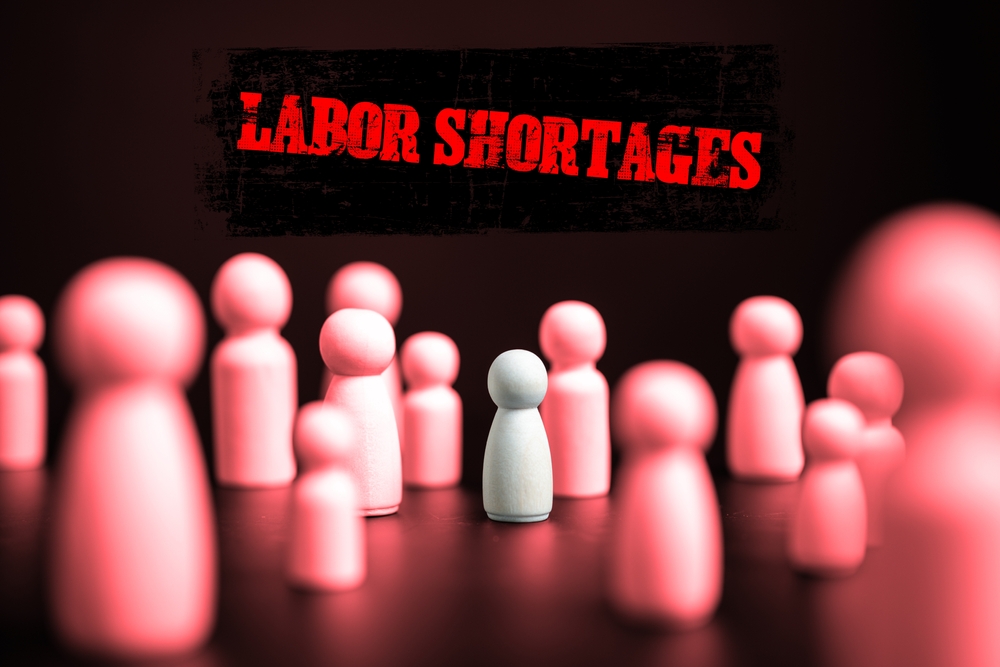As we head into 2024, the labor market in the United States is a vibrant landscape of opportunity and challenge. It’s a world where sectors like healthcare, technology, and hospitality dance to the rhythm of rapid change, driven by demographic shifts, tech innovations, and the ever-evolving needs of the economy. This isn’t just about numbers on a spreadsheet or trends on a graph; it’s about the real lives of millions of workers navigating through these transformations, and the businesses striving to meet new demands while grappling with old and new challenges alike.
Healthcare stands as a beacon of growth and demand, its pulse quickening under the pressure of an aging population and a hunger for more professionals to fill the ranks. Technology, on the other hand, races ahead with a thirst for specialized skills in cybersecurity, artificial intelligence, and data analysis that the current workforce struggles to quench. Meanwhile, the hospitality and tourism sector, shaking off the dust from the pandemic’s impact, looks to rebound but finds itself in a tight spot trying to attract enough hands to provide the warm welcomes and efficient service it’s known for.
Yet, it’s not just about the sectors feeling the pinch. Across the board, from construction sites to manufacturing plants, there’s a recurring theme: the quest for skilled workers to bridge the gap between the old ways of doing things and the new paths carved out by innovation and automation.
Diving into this bustling labor market, we’ll explore the twists and turns of various industries, unravel the complexities of regional employment trends, and shed light on the strategies that businesses, governments, and educational institutions are deploying to adapt and thrive in this dynamic environment. Join us on this journey through the U.S. labor market of 2024, where every challenge is an opportunity in disguise, and the future of work is being rewritten every day.
Shortages in the Healthcare Industry
The healthcare industry is currently like a puzzle, with some of the most crucial pieces missing. As we move deeper into 2024, the gap between the number of healthcare professionals needed and those available is becoming more pronounced. This shortage is not just a matter of numbers but a real concern that touches on the quality of care and the efficiency of healthcare delivery systems across the United States.
At the heart of this healthcare conundrum is a burgeoning demand for services, primarily driven by an aging population that requires more medical attention than ever before. This demographic shift is putting pressure on an already stretched healthcare system. Nurse practitioners, for instance, are emerging as critical players in this evolving landscape. Recognized for their ability to offer comprehensive care, they are touted as a significant part of the solution to the healthcare puzzle. Their role is expanding, and with it, the demand for their expertise is skyrocketing. The promise of a high median salary coupled with explosive job growth makes the nurse practitioner role not just desirable but essential for the future of healthcare in America.
However, addressing the shortage in healthcare is more complex than simply filling positions. The industry faces a multifaceted challenge that includes an aging workforce, the increasing prevalence of chronic diseases, and a healthcare system struggling to keep pace with technological advancements and evolving patient needs. This situation creates a domino effect, where fewer professionals lead to longer wait times, stretched resources, and a workforce on the brink of burnout.
Solutions to this growing issue are as diverse as the problems themselves. They range from ramping up training programs and exploring international recruitment to rethinking how healthcare is delivered. Telemedicine and AI-assisted diagnostics are on the rise, offering innovative ways to enhance care efficiency and alleviate some pressure on the existing healthcare workforce.

Tech Talent Drought Calls for Creative Solutions
The technology sector, a vibrant engine of innovation and growth, finds itself at a crossroads in 2024. As businesses push the boundaries of digital transformation, a pressing challenge emerges: the talent drought in specialized roles. This isn’t just about filling seats; it’s about securing the minds that will drive cybersecurity, artificial intelligence (AI), and data analysis into the next era of technological achievements.
Cybersecurity stands out as a field where demand significantly outpaces supply. In an era where digital threats evolve faster than software updates, the scarcity of cybersecurity experts leaves businesses in a precarious position. The gap between the need for these professionals and their availability is more than a hurdle; it’s a call to action for the tech industry and educational institutions alike.
Artificial intelligence and data analytics are no different, with their potential to revolutionize industries from healthcare to transportation. The demand for AI specialists and data scientists skyrockets as companies seek to harness big data and machine learning for competitive advantage. Yet, the supply of skilled professionals hasn’t kept pace, creating bottlenecks in innovation and deployment of cutting-edge technologies.
Addressing this talent shortage requires a multifaceted strategy. Education systems are under pressure to adapt, offering more specialized programs in cybersecurity and AI, alongside retraining opportunities for those looking to pivot into the tech sector. However, education alone won’t bridge the gap. Immigration policies also come under scrutiny as tech companies often rely on global talent to fill these critical roles. Streamlining visa processes and creating more pathways for skilled immigration could alleviate some of the immediate pressures.
Industry and government collaboration emerges as a crucial element in this equation. By partnering, they can ensure that curriculums align with the evolving needs of the tech sector, preparing a workforce ready to tackle the challenges of tomorrow. Investments in research and development, alongside incentives for companies investing in training programs, could further enrich the talent pool.
The Great Hospitality and Tourism Comeback
After a rollercoaster ride through the pandemic, the hospitality and tourism industry is bouncing back with a vengeance. However, this resurgence is met with a new hurdle: a significant labor shortage. From bustling city hotels to serene beach resorts, the need for skilled staff to cater to the influx of travelers is more pressing than ever.
As the world opens up, so does the appetite for travel and dining experiences, putting the spotlight on the hospitality sector’s struggle to keep up. The crunch isn’t just about filling positions; it’s about attracting talent in a landscape forever altered by recent global events. Workers now seek more than just a paycheck; they want flexibility, fair wages, and a positive work environment.
Businesses in the sector are responding creatively to these demands. Competitive wages have become the norm rather than the exception, as companies realize that to attract and retain the best, they must pay the best. But it’s not just about the money. Flexibility in scheduling and the promise of career progression are also part of the package offered to potential employees.
Yet, the challenges are daunting. Many former industry workers have migrated to other sectors, leaving a gap in experienced personnel. To bridge this gap, the industry is turning to technology and training. From automated check-in kiosks to AI-driven customer service, technological innovations are filling some of the voids. Meanwhile, targeted training programs aim to quickly upskill new hires, making it easier for people from diverse backgrounds to step into hospitality roles.
How Construction and Manufacturing Are Shaping Up in 2024
In 2024, two sectors stood at the crossroads of tradition and innovation: construction and manufacturing. Both are foundational to the American economy, yet each is navigating a unique set of challenges and opportunities in the current labor market landscape.
Starting with construction, the buzz is all about the gap between the need for skilled hands and boots on the ground. The industry is feeling the pressure from an aging workforce and a pipeline of new talent that seems to be dripping rather than flowing. But it’s not all doom and gloom. The sector is responding with a mix of old-school grit and new-age tech. Vocational training programs are seeing a resurgence, offering a beacon of hope for those ready to don hard hats and high-vis jackets. Meanwhile, automation is stepping in to fill the manpower void, promising to keep projects on track and budgets in check.
On the manufacturing side of things, the narrative takes a slightly different turn. Here, the challenge isn’t just finding workers; it’s finding workers with the right skills. The manufacturing jobs of today are a far cry from the assembly lines of yesteryear. They’re high-tech, high-skill, and high-stakes. The sector is in a race to upskill its workforce, with companies and community colleges joining forces to train a new generation of machinists, technicians, and engineers savvy in the ways of automation and artificial intelligence.
What’s clear is that both sectors are not just facing change; they’re chasing it. The construction and manufacturing industries are on a journey toward a future where efficiency, innovation, and skill intersect. As they bridge the gap between the workforce of yesterday and the needs of tomorrow, the path they’re paving is one of opportunity—for workers, for communities, and for the economy at large.

The 2024 Labor Landscape Across the US
From the tech-savvy corridors of the Northeast to the sun-soaked fields of the South, regional dynamics play a pivotal role in shaping the employment narrative. Understanding these nuances is key to grasping the broader labor market story unfolding across the country.
Northeastern Innovation Meets Healthcare and Tech
In the bustling cities and academic hubs of the Northeast, healthcare and technology sectors are in a league of their own. Here, the proximity to prestigious universities and research institutions fuels a relentless pursuit of innovation. However, this relentless drive comes with its own set of challenges, particularly in keeping the supply of skilled labor in step with technological advancements. Despite these hurdles, the region remains a beacon for those looking to make their mark in cutting-edge research and healthcare breakthroughs.
Midwest’s Manufacturing and Agricultural Revival
The heartland’s story is one of transformation and resilience. The Midwest, traditionally known for its manufacturing and agricultural prowess, is witnessing a renaissance through the adoption of automation and smart manufacturing. Yet, this revival isn’t without its trials, as the workforce races to keep pace with new technologies reshaping the landscape. The push towards sustainable agricultural practices also presents both a challenge and an opportunity for growth, signaling a shift towards more environmentally friendly farming methods.
Southern Hospitality and the Energy Boom
Down South, the labor market is buzzing with activity, especially in the construction and energy sectors. The region’s warmth extends beyond its climate, with a booming hospitality industry eagerly bouncing back post-pandemic. But it’s the renewable energy sector that’s truly electrifying the Southern job market, promising a surge of new opportunities as the region embraces green technology. The challenge? Ensuring there’s enough skilled labor to power this burgeoning industry.
West Coast: Where Tech Meets Green
Out West, technology continues to reign supreme, but there’s a new player in town—green jobs. As environmental sustainability becomes a priority, the entertainment and tech industries are exploring innovative ways to reduce their carbon footprint. This green revolution is transforming the job market, creating a demand for roles that blend technological savvy with a passion for the planet. Yet, finding the talent to fill these unique positions remains a puzzle the West Coast is eager to solve.
Southwest’s Logistic Labyrinth
The Southwest is carving out a niche in the logistics and warehousing domain, spurred by the exponential growth of e-commerce. The region’s strategic location makes it a logistic dream, but adapting to the rapid advancement of automation technology poses a significant challenge. The silver lining? A wealth of opportunities for those skilled in logistics management and tech-savvy enough to navigate the future of warehousing.
Each region tells a part of the broader story of America’s labor market in 2024, highlighting the diverse challenges and opportunities that define the employment landscape. From the innovation hubs in the Northeast to the green revolution out West, the dynamics of the labor market are as varied as the geography of the United States itself.
How State Policies Shape Regional Job Markets
In the vast landscape of the U.S. labor market, state policies play a pivotal role in sculpting the employment terrain. From the sunny beaches of California to the bustling streets of New York, each state crafts a unique narrative through its approach to business regulations, wage laws, and educational initiatives. This narrative, in turn, influences who moves in, who moves out, and who thrives within its borders.
The Balancing Act Between Business-Friendly and Worker-Friendly States
States often find themselves walking a tightrope between fostering a business-friendly environment and protecting workers’ rights. This delicate balance can significantly impact regional job markets. For instance, states with higher minimum wages might attract individuals seeking better pay, but could also push small businesses to tighten their belts or explore automation. On the flip side, states lauded for their low corporate taxes and regulatory leniency might become hotspots for startups and established companies looking to expand, thereby creating more jobs.
Education and Training Initiatives That Hit the Mark
Education and training are the bedrock of a skilled workforce, and state policies in these arenas are critical. Some states are ahead of the curve, funneling resources into STEM (Science, Technology, Engineering, and Mathematics) education and vocational training to meet the demand for high-tech and manufacturing jobs. These initiatives not only prepare residents for future-proof careers but also attract businesses in need of a skilled labor pool. The ripple effect? A vibrant job market buoyed by innovation and growth.
Incentives That Spark Innovation and Investment
The magnetic pull of innovation and investment incentives can turn a state into a beacon for businesses. Tax credits, grants, and subsidies for research and development are just a few tools in the policy toolkit that states use to entice companies to set up shop. These policies not only bring jobs but also foster a culture of innovation, making the state a hub for cutting-edge industries. Whether it’s renewable energy in Texas or biotech in Massachusetts, targeted incentives can catalyze sector-specific growth and employment opportunities.
Green Policies and the Surge of Sustainable Jobs
The green wave is reshaping job markets as states with aggressive environmental policies spearhead the transition to a sustainable economy. Renewable energy projects, green building initiatives, and eco-friendly transportation plans are not just good for the planet—they’re also good for the job market. States that invest in green infrastructure and renewable energy are sowing the seeds for new industries and employment opportunities, from solar panel installers to wind turbine technicians. This forward-thinking approach not only addresses environmental concerns but also opens up fresh avenues for job creation.
In the intricate dance of the labor market, state policies play the music to which businesses and workers move. These policies can either open doors to new opportunities or pose challenges that require adaptation and resilience. As each state writes its own chapter in the story of America’s economic future, the collective outcome shapes a labor market as diverse and dynamic as the country itself. Navigating this policy maze requires a keen understanding of the interplay between legislation, economic trends, and the ever-evolving needs of the workforce.
Bridging the Skills Divide with a Unified Approach
The U.S. labor market in 2024 faces a landscape as varied as its geography, with sectors across the board grappling with how to bridge the gap between current workforce capabilities and the demands of an increasingly sophisticated job market. From the bustling tech hubs on the West Coast to the manufacturing heartlands of the Midwest, a common thread ties these diverse challenges together: the urgent need for education, policy support, and technological innovation.

Upskilling the Nation through Education and Training
It’s no secret that education is the cornerstone of workforce development. Yet, as industries evolve at breakneck speed, traditional education models struggle to keep pace. The demand for digital literacy, technical proficiency, and soft skills such as problem-solving and adaptability has never been higher. In response, a growing number of initiatives are focusing on vocational training and continuous learning pathways that align more closely with industry needs.
For instance, in the realm of technology, coding bootcamps and specialized online courses have emerged as viable alternatives to four-year degrees, offering quicker routes to employment in high-demand fields. Similarly, manufacturing and construction sectors are seeing a resurgence in apprenticeship programs, designed to equip workers with the hands-on experience and technical skills needed for success.
The Future with Policy and Regulatory Support
Government policies play a pivotal role in shaping the labor market, influencing everything from the availability of training programs to the incentives for businesses to invest in local talent. State and federal initiatives aimed at boosting workforce development are gaining momentum, offering tax incentives for companies that engage in training, and providing funding for educational institutions that update curricula to reflect the realities of the modern job market.
Moreover, immigration policies are under the spotlight as potential levers for addressing skill shortages in critical areas such as healthcare and technology. By streamlining visa processes for skilled workers, the U.S. can tap into a global talent pool, enriching its workforce diversity and driving innovation.
Leveraging Technology to Fill the Gaps
Artificial intelligence and automation are often viewed through a lens of apprehension, with concerns about job displacement front and center. However, when strategically implemented, these technologies can complement the human workforce, taking over repetitive tasks and freeing up employees for higher-value work that requires emotional intelligence, creativity, and strategic thinking.
Furthermore, technology itself is creating new job categories and career paths. The rise of remote work technologies, for instance, has not only made it possible for people to work from anywhere but has also led to the creation of jobs focused on managing and securing digital work environments.
The Road Ahead
As the U.S. strides into 2024, the synergy between education, policy, and technology stands as a beacon of hope for addressing the labor market’s challenges. By fostering a culture of continuous learning, supporting policies that encourage investment in human capital, and embracing the potential of technology to augment our workforce, the nation is well-positioned to navigate the complexities of the modern labor landscape.
The journey is undoubtedly complex, with each sector facing its unique set of challenges. Yet, the collective effort to build a resilient, skilled, and adaptable workforce is a goal that unites industries across the nation. In this shared endeavor, the promise of a vibrant and inclusive labor market looms large on the horizon, beckoning with opportunities for growth, innovation, and prosperity.
The Future of Work in 2024
The U.S. labor market presents a landscape full of opportunities and challenges that mirror the evolving dynamics of work, technology, and regional economic health. The shift is not just a ripple but a wave reshaping industries from healthcare to technology, hospitality to construction, and manufacturing, painting a complex picture of labor shortages, technological advancements, and innovative solutions designed to bridge the gap between demand and supply.
In healthcare, the sector’s pulse quickens with the demand for professionals like nurse practitioners, whose roles are expanding rapidly, reflecting a projected growth rate of 45% from 2022 to 2032. This surge underscores the critical need for a multifaceted strategy to address labor shortages, including ramping up education and training programs, broadening international recruitment, and integrating technology to streamline healthcare delivery.

The technology sector stands at the frontier of innovation but faces its own set of challenges with a significant talent drought in specialized roles such as cybersecurity experts and AI developers. The demand for tech skills outpaces the supply, creating a talent bottleneck that could potentially slow the pace of innovation and economic growth. Yet, there’s a silver lining as education systems and policy reforms aim to fast-track the development of a skilled workforce to meet this burgeoning demand.
Hospitality and tourism, sectors hit hard by the pandemic, are now bustling with activity yet struggling to find enough hands to do the work. This industry’s revival hinges on attracting and retaining talent by offering competitive wages, flexible work schedules, and leveraging technology to enhance operational efficiency.
Construction and manufacturing sectors face a dual challenge: a significant skills gap and the need to adapt to automation and technological advancements. Vocational training programs and industry-academic partnerships are key to preparing a workforce that can navigate the complexities of modern manufacturing and construction projects.
Each region in the U.S. brings its own flavor to the labor market stew, with the Northeast leading in healthcare and tech innovation, the Midwest holding strong in manufacturing and agriculture, the South booming in construction and energy, the West pioneering in tech and green jobs, and the Southwest expanding in logistics and warehousing. State policies play a pivotal role in shaping these regional labor markets, influencing everything from job creation to skill development and environmental sustainability.









